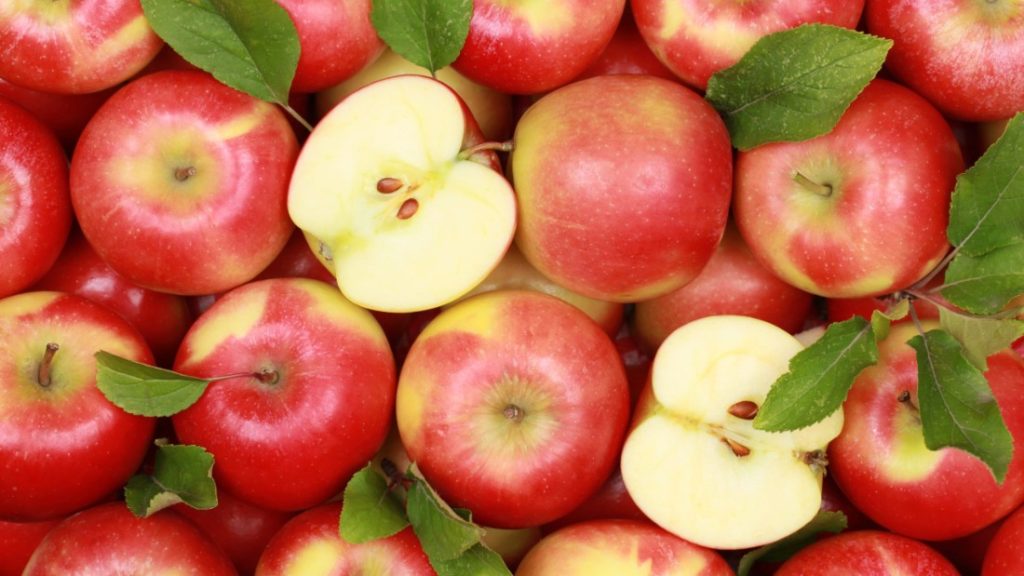Table of Contents
Apples to Oranges, Apples to Apples
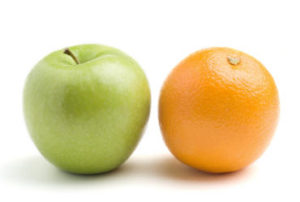 |
“Comparing apples to oranges” is a phrase used to indicate that two things are so different that comparing them makes no sense at all. But what about the science of comparing apples and oranges? It turns out that, in a lot of ways, apples and oranges are quite alike. Check it out at Surprising Science: Comparing Apples and Oranges. |
| For a humorous infographic look at apples vs. oranges, see Apples to Oranges: The Final Comparison. (Apples win.) | |
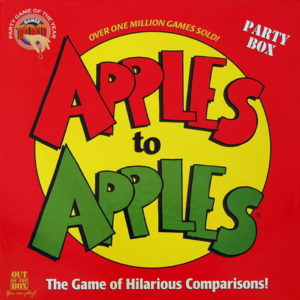 |
Mattel’s Apples to Apples (originally from Out of the Box Publishing) is a great family game of creative comparisons. In each round of play, a green-apple card printed with an adjective (NEAT, DISTURBING, INTELLIGENT, SWEET, CREEPY) is displayed and players choose a red-apple card from their hands that they feel makes the best match. Usually this is a stretch, since red-apple cards are an eclectic assortment of terms such as THE PYRAMIDS, PIGEONS, CREAMED CORN, and EMILY DICKINSON. Players take turns acting as judge, deciding which match is best. (Sometimes creamed corn really is creepy.) Recommended for 4-10 players, ages 10 and up. Also available in a junior version for ages 7 and up. |
POEMS, PROVERBS, and a Few Bad Apples
| Read Robert Frost’s After Apple-picking from his 1915 collection North of Boston. | |
| See Amy Lowell’s Apples of the Hesperides. | |
| Read William Butler Yeats’s The Song of Wandering Aengus – the wonderful poem that ends with “The silver apples of the moon/The golden apples of the sun.” | |
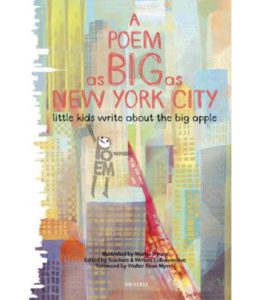
|
A very different kind of apple. From the Teachers Writers Collaborative, A Poem as Big as New York City: Little Kids Write About the Big Apple (Universe, 2005) is a collection of children’s poems about the city, with wonderful watercolor and graphic illustrations by Masha D’yans. For ages 5 and up. |
| “The apple doesn’t fall far from the tree.” “Don’t upset the apple cart.” “There’s small choice in rotten apples.” Check out a long list of proverbs and quotes about apples at Proverbs and Quotes About Fruit. |
|
| BAD apples. From NPR, linguist Geoff Nunberg discusses Bad Apple Proverbs. |
APPLES IN SCIENCE: Edgerton’s Bullet and Newton’s Orchard
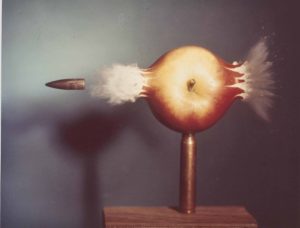 |
MIT professor Harold Edgerton pioneered strobe flash, stop-action photography. See his famous photograph Shooting the Apple. For more about Edgerton’s work, see the Edgerton Digital Collections Project. |
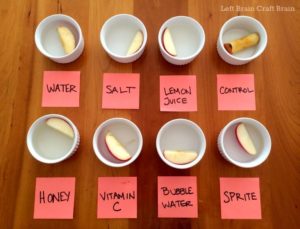 |
Find out why apples do (or do not) turn brown with the Brown Apple Project experiment. |
| Effects of Acids and Bases on the Browning of Apples is a nicely designed chemistry experiment with multiple variables. |
|
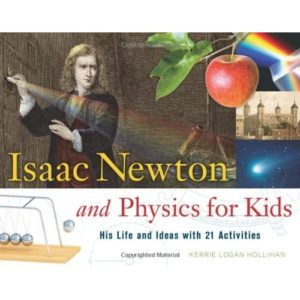
|
Kerrie Logan Hollihan’s Isaac Newton and Physics for Kids (Chicago Review Press, 2009) is an illustrated account of Newton’s life and science, including his explanation of gravity, said to have been inspired by watching an apple fall from a tree. The book features 21 hands-on projects and experiments, among them making a waterwheel, a prism, and a crystal garden, investigating the laws of motion, and baking an “apple pye in a coffin.” Along with the modern recipe, there’s a 17th-century recipe “to make pyes of grene apples” of the sort that might have been served by a cook in Newton’s day. For ages 9 and up. |
| Electricity with apples? Try the Apple Battery Project. |
